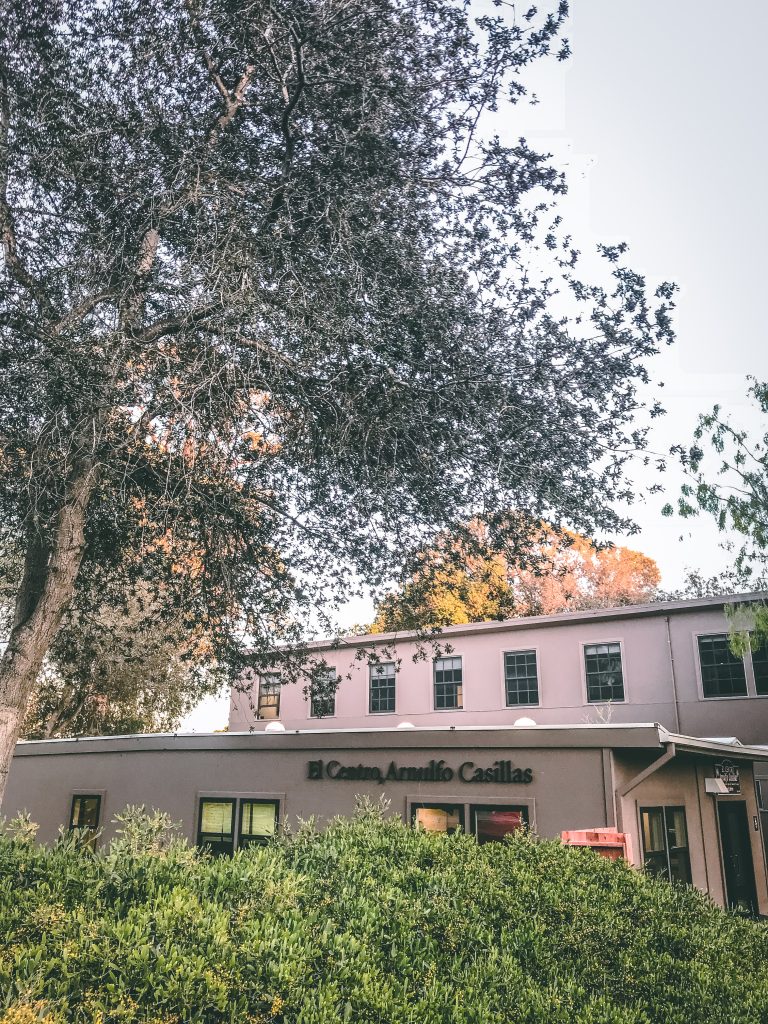
Alondra Sierra
The newly remodeled El Centro was officially reopened on April 14 with new upgrades and a much-needed expansion to provide more resources for students and organizations which the historic building has supported.
In an effort to increase access to El Centro’s space for community members, the activities section of the building was extended by three feet, according to fourth year English major and Black studies minor Lorena Alvarez. Alvarez has been a member of El Congreso de UCSB since 2014.
Alvarez, along with other students, was involved in the negotiating and planning of El Centro’s renovation. Decisions on interior changes and additions were planned by the Educational Opportunity Program, Student Affairs, and El Centro Committee, along with other students, alumni, and members of organizations like El Congreso de UCSB, M.U.J.E.R, and Students for Justice in Palestine. Many organizations use El Centro as their home away from home.
Whereas organizations were previously forced to improvise with presentations by using projectors and bed sheets, newly upgraded furniture like plasma televisions and whiteboards now allow students to hold effective meetings.
Other renovations to the building’s interior include three different conference and study rooms and a full kitchen. This is an advantage for students who live off campus.
“The kitchen will be so useful for students who frequent the space,” said Alex Gutierrez, third year sociology and Chicana/o studies major. “I know a lot of us are food insecure and the kitchen, along with the EOP, should be a big help for students who are on campus all day.”
El Centro, having once housed professors, EOP, and the Chicano/a studies department, is also bringing back services like EOP, EAOP, and CAPS with the intent of providing more resources for Chicanx, Latinx students, and the greater community.
Though now fully renovated, the duration and process of the entire project was prolonged and demanding for students involved in the planning. To some, the extent of student demands to push for answers and change to El Centro’s future points to the university’s neglect to provide much-needed resources to the Latinx and Chicanx population at UCSB. Other buildings across campus have been provided with resources and technology for many years.
“The decision of renovating the space was decided as a quick fix to a bigger problem,” said Dulcinea Arroyo, third year Chicanx studies and sociology double major. Arroyo is also the co-chair of M.U.J.E.R. “The renovations to the space were not a luxury but a necessity to the basic safety to the building and students.”
Regardless of the renovation, concerns over the future of El Centro continue to loom over community members who seek reassurance of a permanent building. The demand for a legally binding document stating El Centro’s permanent existence dates back to the building’s historical hunger strikes that began in 1994. Nine members of El Congreso participated in a ten-day hunger strike that also protested fee hikes.
According to third year Dulce Gonzalez, students deserve more from the administration considering decades of activist work and ignored demands. Gonzalez is a sociology major, applied psychology minor, and co-chair of M.U.J.E.R.
“We as M.U.J.E.R. want to see this space continue to grow and expand, providing support and resources not just to Chicanx and Latinx communities but to other backgrounds,” Arroyo said.
“The administration should also acknowledge that black students on campus do not have a permanent space,” Gonzalez added.
Both students hope the completed renovation of El Centro will open up conversation about the ignored demands of students of color. In the meantime, students of all backgrounds are welcome to make use of El Centro’s resources and services.
“In the end, El Centro is a home away from home for us, a place where we as students of color can feel safe and understood,” Arroyo said. ”That is the beauty of El Centro.”










